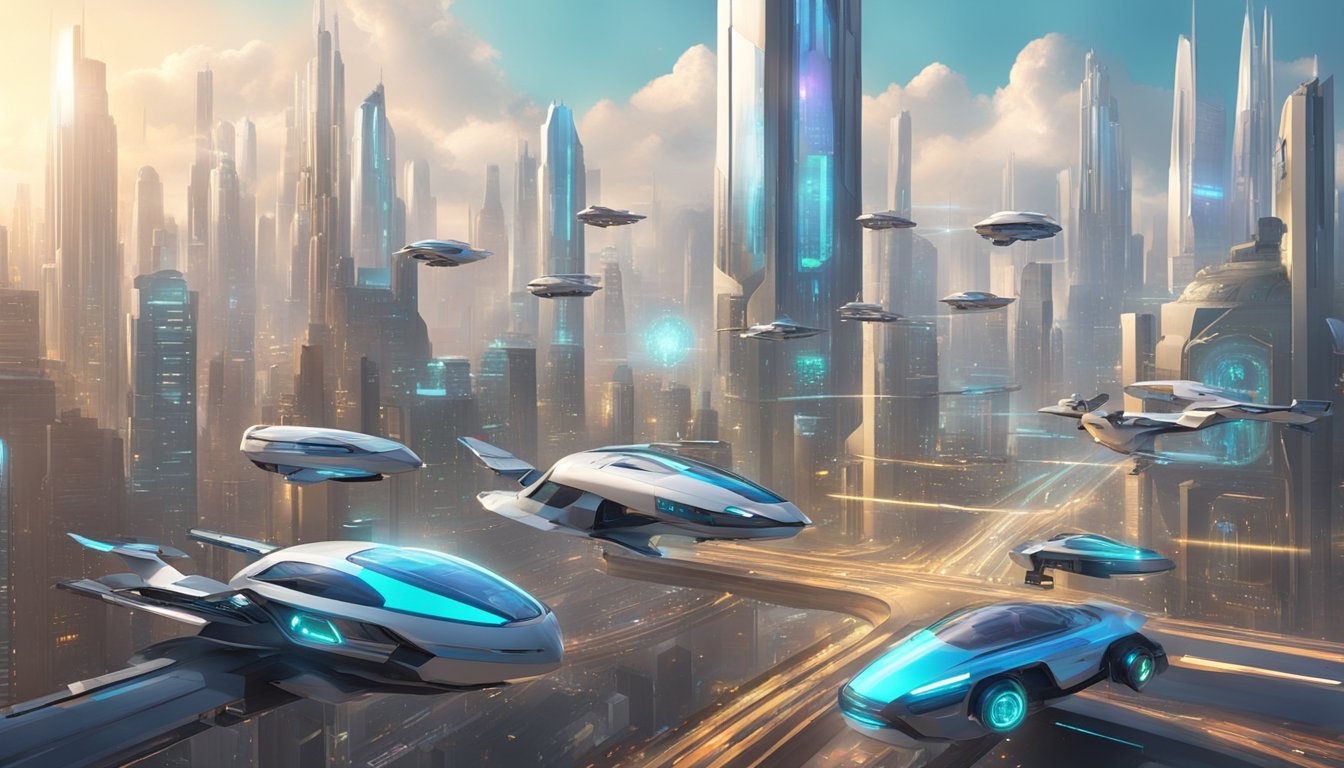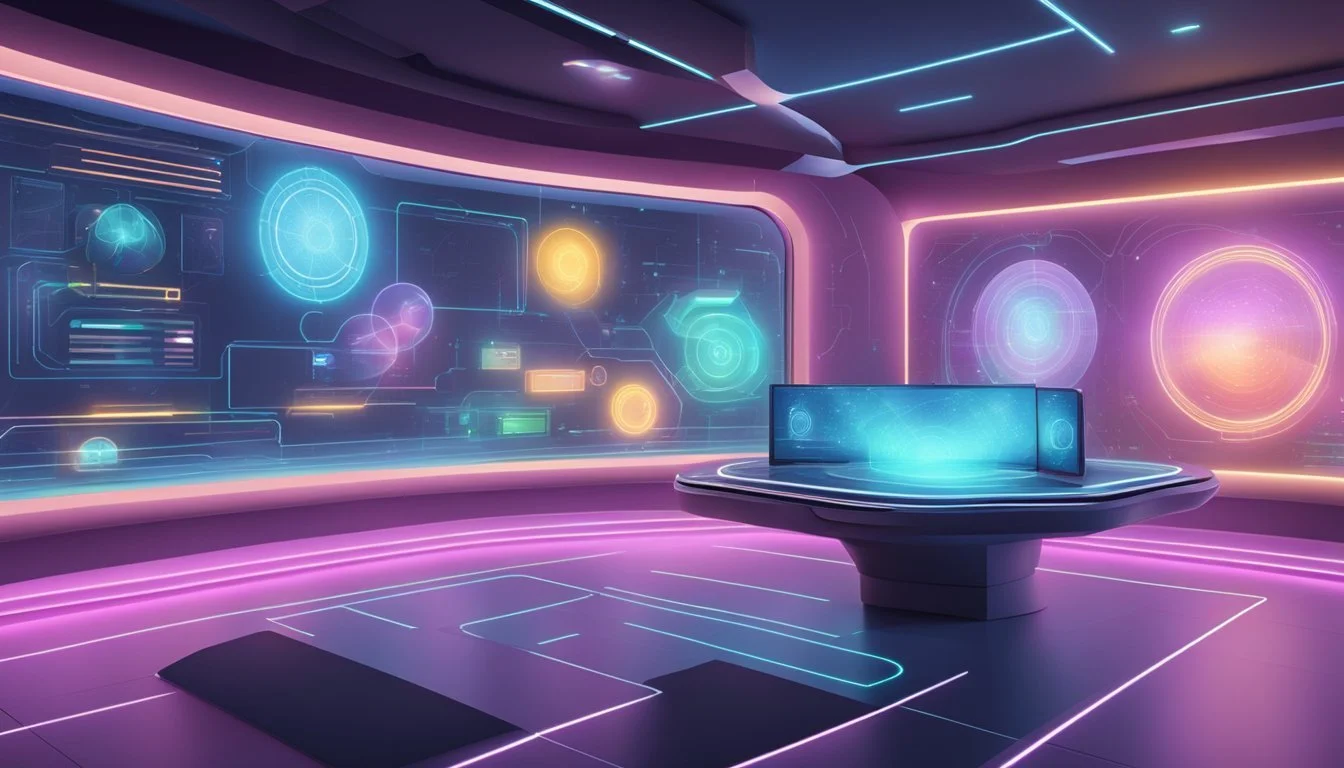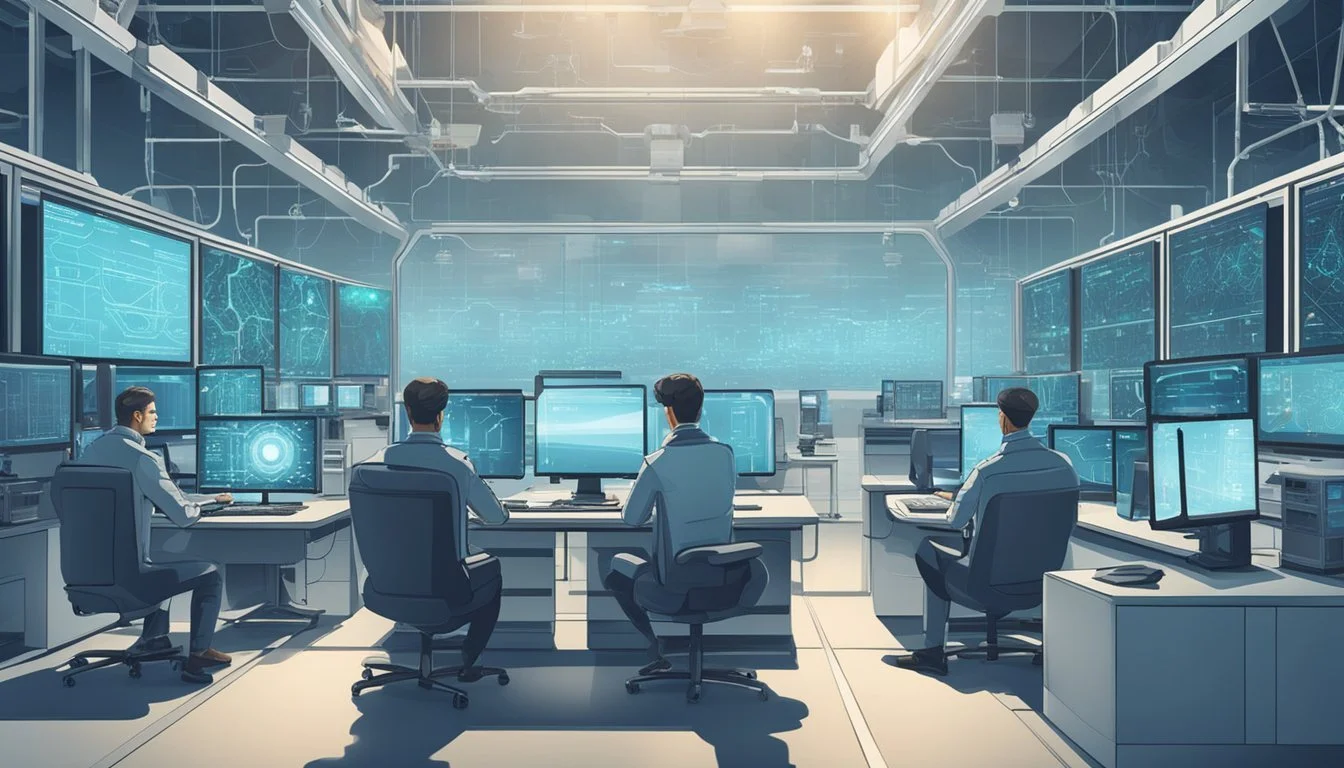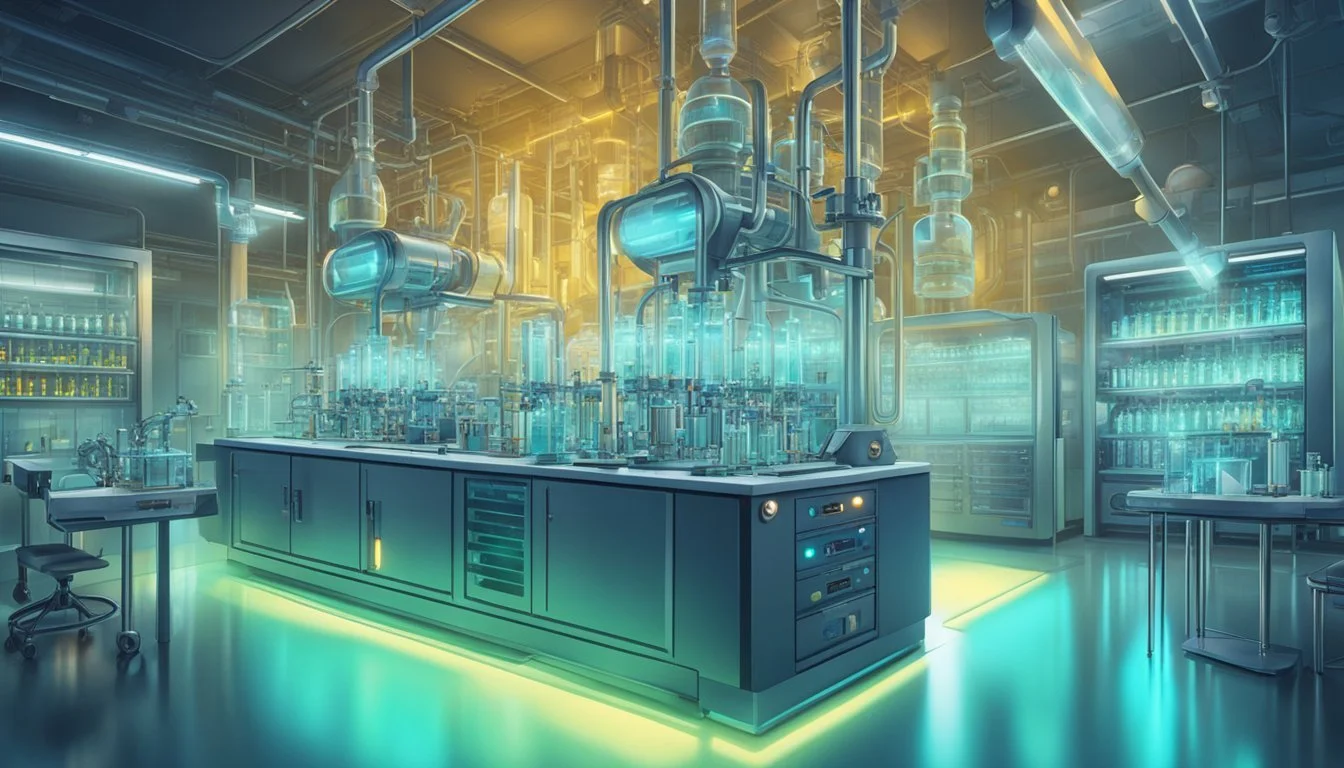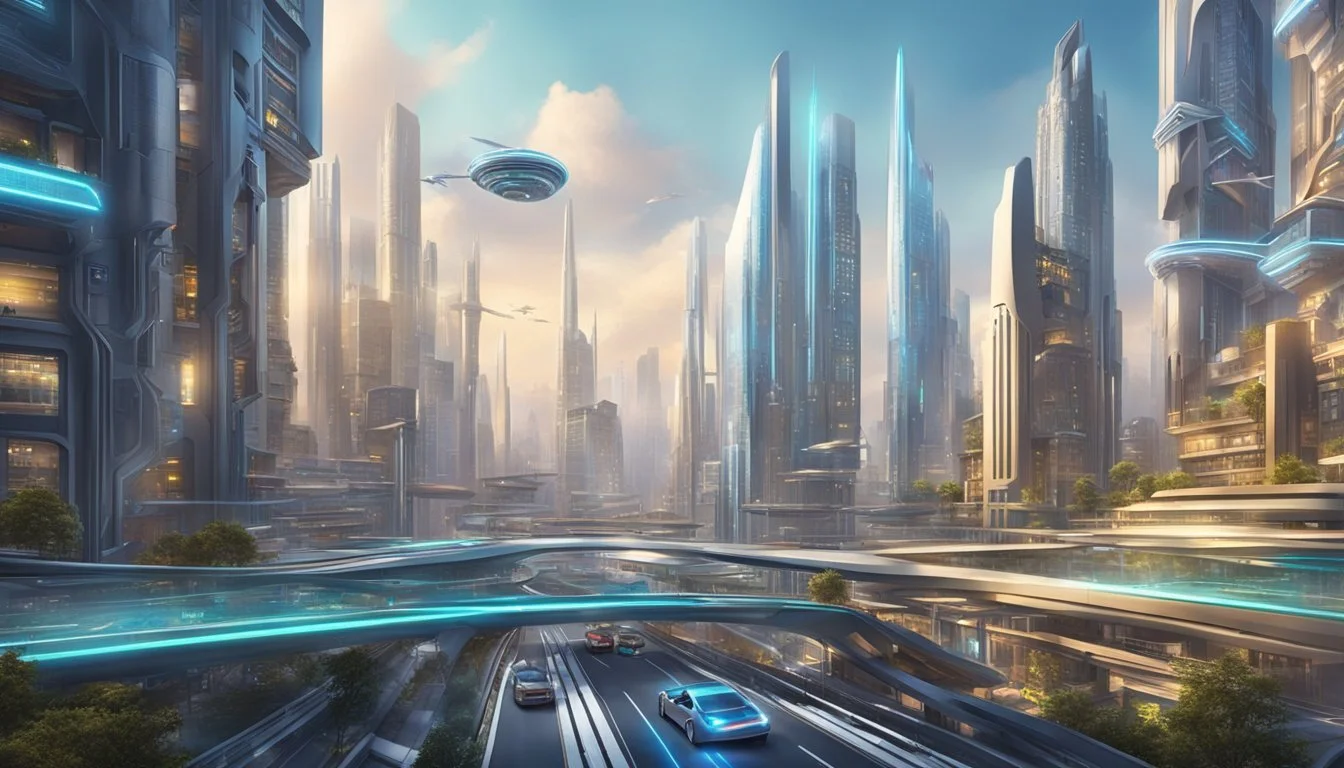9 Documentaries That Show How Science Fiction Became Reality
From Fantasy to Fact
Science fiction has long captivated audiences with its imaginative visions of the future. From advanced technologies to societal changes, these speculative stories have often served as a crystal ball, offering glimpses into potential realities that once seemed far-fetched.
Documentaries exploring the intersection of science fiction and reality provide fascinating insights into how fictional ideas have shaped our world. These films examine the ways in which concepts from literature, movies, and television have influenced real-world innovations and scientific advancements. By showcasing the journey from imagination to implementation, they highlight the power of creative thinking in driving progress and shaping our collective future.
1) "Blade Runner" and Its Influence on Robotics
"Blade Runner" revolutionized the visual aesthetics of science fiction cinema. The 1982 film depicted a dystopian future where advanced humanoid robots called replicants were nearly indistinguishable from humans.
This portrayal sparked discussions about the ethical implications of creating lifelike artificial beings. It raised questions about consciousness, empathy, and what truly defines humanity.
The movie's exploration of human-robot relationships influenced real-world robotics development. Engineers and designers drew inspiration from the film's depiction of androids, aiming to create more human-like robots.
"Blade Runner" also predicted the integration of AI into daily life. The film's voice-activated systems and digital billboards foreshadowed many of today's technologies.
Its impact extended beyond technology, shaping cyberpunk culture and inspiring countless works of fiction. The film's themes continue to resonate as advancements in AI and robotics bring us closer to its imagined future.
[https://en.wikipedia.org/wiki/Blade_Runner]
2) "Star Trek" Communicators and Modern Smartphones
The iconic communicators from "Star Trek" have become a reality in the form of modern smartphones. These handheld devices, first introduced in the original series, allowed crew members to communicate wirelessly across vast distances.
Today's smartphones bear a striking resemblance to their fictional counterparts. They enable global communication, instant access to information, and perform a multitude of tasks beyond simple voice transmission.
The influence of "Star Trek" on smartphone development is undeniable. The show's creator, Gene Roddenberry, envisioned a future where portable communication devices were commonplace. This vision inspired engineers and designers to bring similar technology to life.
Modern smartphones have surpassed the capabilities of their sci-fi predecessors. They feature touchscreens, high-resolution cameras, and internet connectivity. These devices have revolutionized how we interact with the world and each other.
The journey from "Star Trek" communicators to smartphones demonstrates how science fiction can spark real-world innovation. It showcases the power of imagination in driving technological progress.
https://en.wikipedia.org/wiki/Communicator_(Star_Trek)
3) "Minority Report" and Gesture-Based Interfaces
Steven Spielberg's 2002 sci-fi thriller "Minority Report" showcased a futuristic world where technology and crime prevention intersect. The film's most iconic element was its gesture-based computer interface.
This system allowed users to manipulate data and images in mid-air using hand movements. At the time, such technology seemed far-fetched and purely fictional.
Today, gesture-based interfaces have become a reality. Companies like Microsoft, Samsung, and Apple have developed technologies that allow users to control devices through hand motions.
The Kinect for Xbox, released in 2010, brought motion-sensing gameplay to millions of homes. Smartphones now incorporate gesture controls for simple tasks like silencing calls or taking screenshots.
While we haven't reached the seamless, holographic interfaces depicted in "Minority Report," the film's influence on real-world technology is undeniable. It inspired researchers and engineers to push the boundaries of human-computer interaction.
As virtual and augmented reality technologies continue to advance, we may soon see more sophisticated gesture-based interfaces in everyday life.
https://en.wikipedia.org/wiki/Minority_Report_(film)
4) "Back to the Future II" and Hoverboards
"Back to the Future II" captivated audiences with its futuristic vision of 2015. The film showcased various advanced technologies, including the iconic hoverboard.
Marty McFly's hoverboard chase scene left viewers dreaming of a world where skateboarding could take place mid-air. The filmmakers used practical effects to create the illusion of hovering.
While true hoverboards remain elusive, the concept has inspired real-world innovations. Various companies have attempted to create hoverboard-like devices using magnetic levitation or propulsion systems.
In 2015, Lexus unveiled a functioning magnetic hoverboard prototype. Though limited in application, it demonstrated progress towards the film's vision.
The cultural impact of "Back to the Future II" hoverboards extends beyond technology. They have become a symbol of future possibilities and continue to inspire inventors and dreamers alike.
https://en.wikipedia.org/wiki/Back_to_the_Future_Part_II
5) "The Jetsons" and Video Calling Technology
"The Jetsons" animated series, which first aired in 1962, accurately predicted the widespread use of video calling technology. The show featured characters regularly communicating through video screens, a concept that seemed far-fetched at the time.
In the cartoon, video calls were a routine part of daily life for the Jetson family. They used them for work, personal conversations, and even to connect with family members who were far away.
Today, video calling has become a reality and is widely adopted worldwide. Applications like Skype, FaceTime, and Zoom have made face-to-face communication possible across vast distances.
The COVID-19 pandemic accelerated the adoption of video calling technology, making it an essential tool for remote work, education, and staying connected with loved ones. This technology has transformed how we communicate, closely mirroring the vision presented in "The Jetsons" over 60 years ago.
https://en.wikipedia.org/wiki/The_Jetsons
6) "2001: A Space Odyssey" and AI Assistants
Stanley Kubrick's "2001: A Space Odyssey" introduced the world to HAL 9000, an artificial intelligence that controlled spacecraft systems. This fictional AI eerily foreshadowed modern AI assistants like Siri, Alexa, and Google Assistant.
HAL's ability to understand and respond to natural language queries mirrors today's voice-activated AI assistants. The film's depiction of AI managing complex systems also reflects current trends in smart home and industrial automation technologies.
While HAL's capabilities seemed far-fetched in 1968, many have become commonplace. AI assistants now handle tasks like scheduling appointments, controlling home devices, and answering questions - functions similar to HAL's role aboard the Discovery One.
The film raised ethical questions about AI that remain relevant today. Issues of AI autonomy, decision-making, and potential conflicts with human interests continue to be debated as AI technology advances.
"2001: A Space Odyssey" anticipated the integration of AI into daily life, sparking both excitement and concern about our increasingly AI-assisted future.
[https://en.wikipedia.org/wiki/2001:A_Space_Odyssey(film)]
7) "Total Recall" and Virtual Reality Experiences
"Total Recall" (1990) envisioned a future where people could purchase artificial memories for entertainment. The film explored the concept of virtual reality experiences implanted directly into one's mind.
In the movie, protagonist Douglas Quaid visits Rekall, a company that offers virtual vacations through memory implants. This idea parallels modern virtual reality technology, albeit in a more advanced form.
Today, VR headsets allow users to immerse themselves in digital environments, much like the memory implants in "Total Recall." While current technology cannot directly manipulate memories, it can create convincing simulated experiences.
The film's concept of altering reality through artificial means resonates with ongoing developments in VR and augmented reality. These technologies continue to blur the lines between physical and digital experiences.
"Total Recall" anticipated the potential for virtual experiences to impact personal identity and perception of reality. This theme remains relevant as VR technology becomes increasingly sophisticated and widespread.
https://en.wikipedia.org/wiki/Total_Recall_(1990_film)
8) "The Matrix" and Brain-Computer Interfaces
"The Matrix" introduced audiences to a world where humans were plugged into a simulated reality through neural interfaces. This concept, once purely science fiction, has inspired real-world advancements in brain-computer interface (BCI) technology.
Companies like Neuralink are developing BCI devices that could potentially allow direct communication between the brain and external devices. These interfaces use tiny electrodes to detect and interpret neural signals.
While current BCIs are far from the level depicted in "The Matrix," they show promise for medical applications. Researchers are exploring their use in treating conditions like paralysis and blindness.
The ethical implications of BCIs raise important questions about privacy, security, and the nature of human consciousness. As technology progresses, society must grapple with these issues.
Though full immersion in a virtual world remains distant, "The Matrix" continues to influence discussions about the future of human-computer interaction and the boundaries between reality and simulation.
9) "Gattaca" and Genetic Engineering
"Gattaca" explores a future where genetic engineering has become commonplace. The 1997 film depicts a society divided between those with enhanced genes and those born naturally.
In the movie, genetic screening determines social status and career prospects. This concept reflects real-world advances in genetic testing and modification that were emerging at the time.
The film's vision of DNA-based discrimination raised ethical questions about genetic engineering. It sparked discussions on the potential societal impacts of these technologies.
"Gattaca" predicted some aspects of modern genetic science with surprising accuracy. Today, genetic testing is widely available, and gene editing tools like CRISPR are advancing rapidly.
The movie continues to be relevant in debates about genetic privacy, discrimination, and the ethics of human enhancement. Its themes resonate as genetic technologies become increasingly sophisticated in reality.
https://en.wikipedia.org/wiki/Gattaca
The Intersection of Science Fiction and Technology
Science fiction has long served as a wellspring of inspiration for technological progress. Many innovations that were once purely imaginative have become reality, transforming our world in profound ways.
Historical Context and Predictions
Science fiction authors have accurately predicted numerous technological advancements. Jules Verne envisioned submarines and lunar missions in the 19th century. Arthur C. Clarke described communication satellites decades before their invention. Isaac Asimov explored robotics and artificial intelligence, concepts now at the forefront of technological development.
These visionary works not only entertained readers but also sparked the imaginations of scientists and engineers. The predictive power of science fiction demonstrates its ability to anticipate and shape future technologies.
Key Influences of Sci-Fi on Innovation
Science fiction has directly influenced real-world innovations. Star Trek's communicators inspired early mobile phone designs. The gestural interfaces in Minority Report led to advances in touch-screen technology. Neuromancer's concept of cyberspace preceded the internet as we know it today.
Many researchers credit science fiction for triggering their interest in science and inspiring breakthroughs. This symbiotic relationship between imagination and innovation continues to drive technological progress, blurring the lines between fiction and reality.
Real-Life Innovations Inspired by Science Fiction
Science fiction has long served as a wellspring of ideas for technological advancements. Many concepts once considered purely imaginative have materialized into tangible innovations, reshaping our world in profound ways.
From Fictional Communicators to Smartphones
The evolution of communication devices in science fiction has closely paralleled real-world technological progress. Star Trek's communicators, introduced in the 1960s, bore a striking resemblance to early flip phones. These fictional devices inspired engineers and designers in the development of mobile technology.
The first mobile phone, the Motorola DynaTAC, debuted in 1973. It was bulky, weighed 2.4 pounds, and offered only 35 minutes of talk time. Today's smartphones far surpass the capabilities of their fictional predecessors, combining communication, computing, and multimedia functions in a single device.
Artificial Intelligence: From Imagination to Reality
Artificial intelligence (AI) has been a staple of science fiction for decades, often portrayed as sentient machines or hyper-intelligent computer systems. These fictional depictions have motivated scientists and researchers to push the boundaries of AI technology.
Modern AI applications range from virtual assistants like Siri and Alexa to complex algorithms powering autonomous vehicles. Machine learning and neural networks have enabled computers to process vast amounts of data, recognize patterns, and make decisions with increasing sophistication.
While we have not yet achieved the level of AI depicted in some science fiction narratives, significant progress has been made in natural language processing, computer vision, and robotics.

